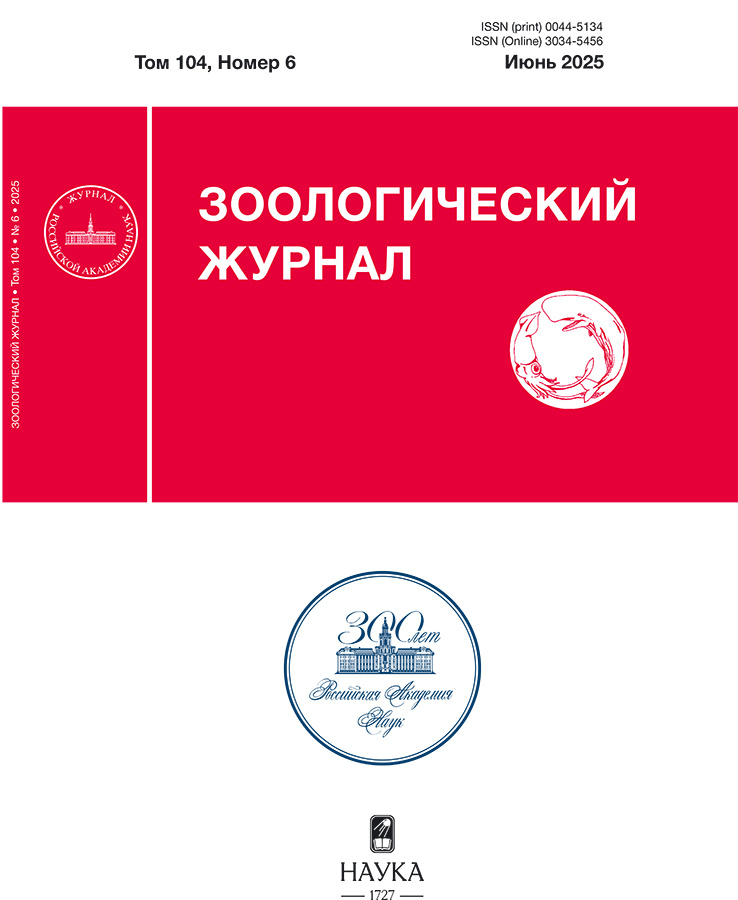Сравнение микроструктуры волос древней ленской лошади (†Equus lenensis Russanov 1968) и домашней лошади (Equus caballus caballus Linnaeus 1758) аборигенных северных пород
- Авторы: Спасская Н.Н.1, Чернова О.Ф.2, Вдовина Н.В.3, Юрьева И.Б.3
-
Учреждения:
- Научно-исследовательский Зоологический музей Московского государственного университета имени М. В. Ломоносова
- Институт проблем экологии и эволюции имени А. Н. Северцова РАН
- Приморский филиал Федерального исследовательского центра комплексного изучения Арктики имени академика Н. П. Лаверова УрО РАН – Архангельский научно-исследовательский институт сельского хозяйства УрО РАН
- Выпуск: Том 103, № 6 (2024)
- Страницы: 127-136
- Раздел: Статьи
- URL: https://innoscience.ru/0044-5134/article/view/654278
- DOI: https://doi.org/10.31857/S0044513424060077
- EDN: https://elibrary.ru/uilzst
- ID: 654278
Цитировать
Полный текст
Аннотация
С помощью СЭМ, в сравнительном аспекте изучена микроструктура остевых волос и выполнена морфометрия элементов их сердцевины у ленской лошади (Equus lenensis) и домашней лошади (E. caballus caballus) пяти пород. Выявлен ряд особенностей микроструктур волос, наиболее ярко проявляющихся при сравнении лошадей северной (мезенская, печорская, якутская) и южной (арабская, ахалтекинская) групп пород. Сезонные изменения в строении волос у лошадей северных пород (утолщение сердцевины волоса и увеличение объема ее воздушных полостей) свидетельствуют о повышении теплозащитных свойств шерсти в зимнее время, что имеет адаптивное значение. Показано, что и у плейстоценовых, и у современных домашних лошадей сформировались конвергентные морфологические адаптации шерсти к низким температурам воздуха.
Ключевые слова
Полный текст
Об авторах
Н. Н. Спасская
Научно-исследовательский Зоологический музей Московского государственного университета имени М. В. Ломоносова
Автор, ответственный за переписку.
Email: equusnns@mail.ru
Россия, Москва, 125009
О. Ф. Чернова
Институт проблем экологии и эволюции имени А. Н. Северцова РАН
Email: olga.chernova.moscow@gmail.com
Россия, Москва, 119071
Н. В. Вдовина
Приморский филиал Федерального исследовательского центра комплексного изучения Арктики имени академика Н. П. Лаверова УрО РАН – Архангельский научно-исследовательский институт сельского хозяйства УрО РАН
Email: vdovina.natali2014@yandex.ru
Россия, Архангельск, 163020
И. Б. Юрьева
Приморский филиал Федерального исследовательского центра комплексного изучения Арктики имени академика Н. П. Лаверова УрО РАН – Архангельский научно-исследовательский институт сельского хозяйства УрО РАН
Email: arhsel@mail.ru
Россия, Архангельск, 163020
Список литературы
- Алексеев Н.Д., 1985. Адаптация лошадей к температурным факторам среды. Дис. … канд. биол. наук. Рязань: ВНИИ коневодства. 199 с.
- Косинцев П.А., Пластеева Н.А., Васильев С.К., 2013. Дикие лошади (Equus (Equus) s. l.) Западной Сибири в голоцене // Зоологический журнал. Т. 92. № 9. С. 1107–1116.
- Маркова А.К., ван Кольфсхотен Т., Бохнкке Ш., Косинцев П.А., Мол И., Пузаченко А.Ю., Симакова А.Н., Смирнов Н.Г., Верпоорте А., Головачев И.Б., 2008. Эволюция экосистем Европы при переходе от плейстоцена к голоцену (24–8 тыс. л.н.). М.: Товарищество научных изданий КМК. 556 с.
- Попов Р.А., Владимиров Л.Н., Сергиенко С.С., 2002. Моделирование теплоотдачи якутской лошади при отрицательных температурах окружающей среды // Научные основы сохранения и совершенствования пород лошадей. Сб. науч. трудов. ВНИИ коневодства. С. 28–45.
- Рогалевич М.И., 1941. Коневодство Якутской АССР // Труды Якутской экспедиции АН СССР. М. – Л.: АН СССР. 76 с.
- Соколов В.Е., 1977. Кожный покров ископаемой лошади из Селерикана / Фауна и флора антропогена Северо-Востока Сибири // Труды ЗИН. Т. 63. Л.: Наука. С. 186–200.
- Соколов В.Е., Скурат Л.Н., Степанова Л.В., Сумина Е.Б., Шабадаш С.А., 1988. Руководство по изучению кожного покрова млекопитающих. М.: Наука. 280 с.
- Соломонов Н.Г., Ануфриев А.И., Ядрихинский В.Ф., Исаев А.П., 2009. Изменение температуры тела у чистопородных и гибридных якутских лошадей в условиях Якутии // Доклады Академии наук. Т. 427. № 3. С. 426–429.
- Спасская Н.Н., Чернова О.Ф., Ибраев М.В., 2012. Особенности микроструктуры волос плейстоценовой мумии Билибинской лошади (Equidae, Perissodactyla) // Вестник Московского Университета. Серия 16. Биология. № 1. С. 41–50. http://elibrary.ru/item.asp?id=17637054
- Чернова О.Ф., Перфилова Т.В., Спасская Н.Н., Киладзе А.Б., Ибраев М.В., 2011. Атлас микроструктуры волос лошадей. (Библиотека судебного эксперта). М.: Товарищество научных изданий КМК. 231 с.
- Abramoff M.D., Magalhaes P.J., Ram S.J., 2004. Image Processing with ImageJ // Biophotonics International. V. 11. № 7. P. 36–42.
- Kratochvil Z., 1971. Microscopic evaluation of the hairs of the mane and tail of the wild horse (Equus przewalskii) in comparison with the modern and historical domesticated horse (Equus przewalskii f. caballus) // Acta Veterinaria Brno. V. 40. P. 23–31.
Дополнительные файлы














